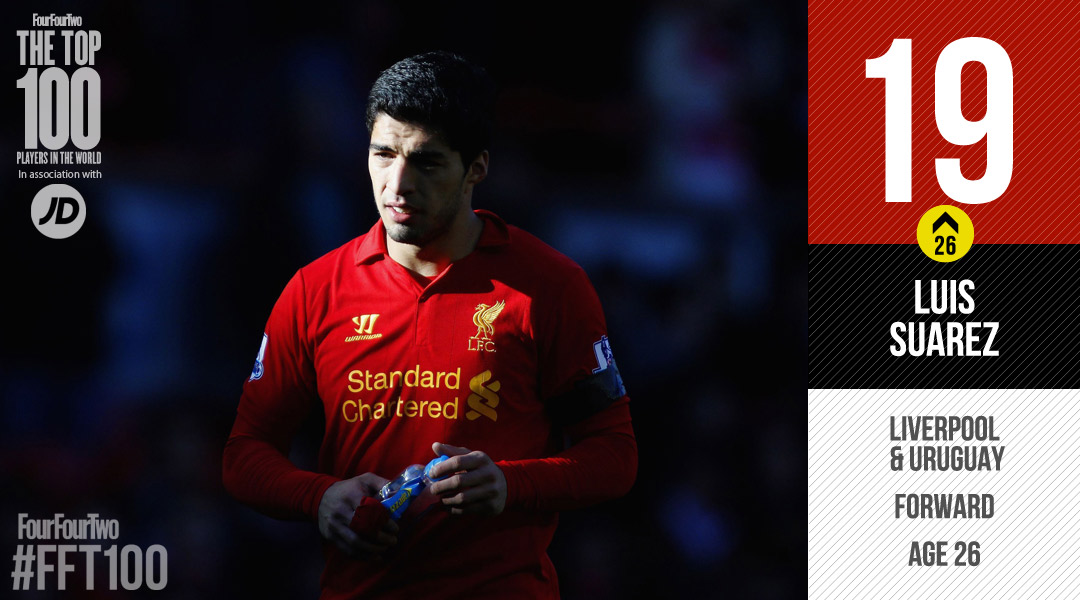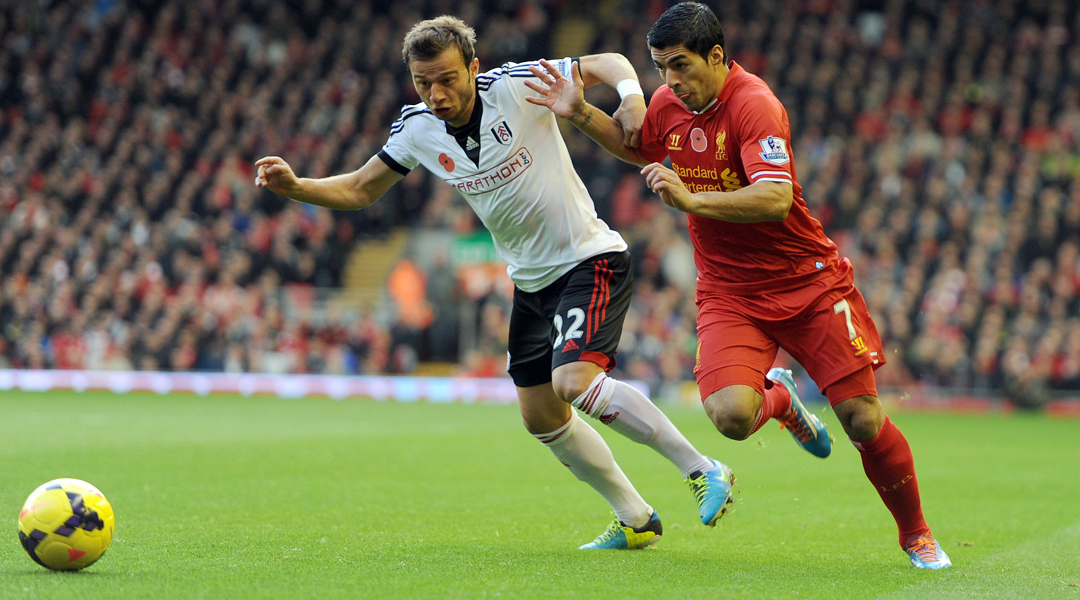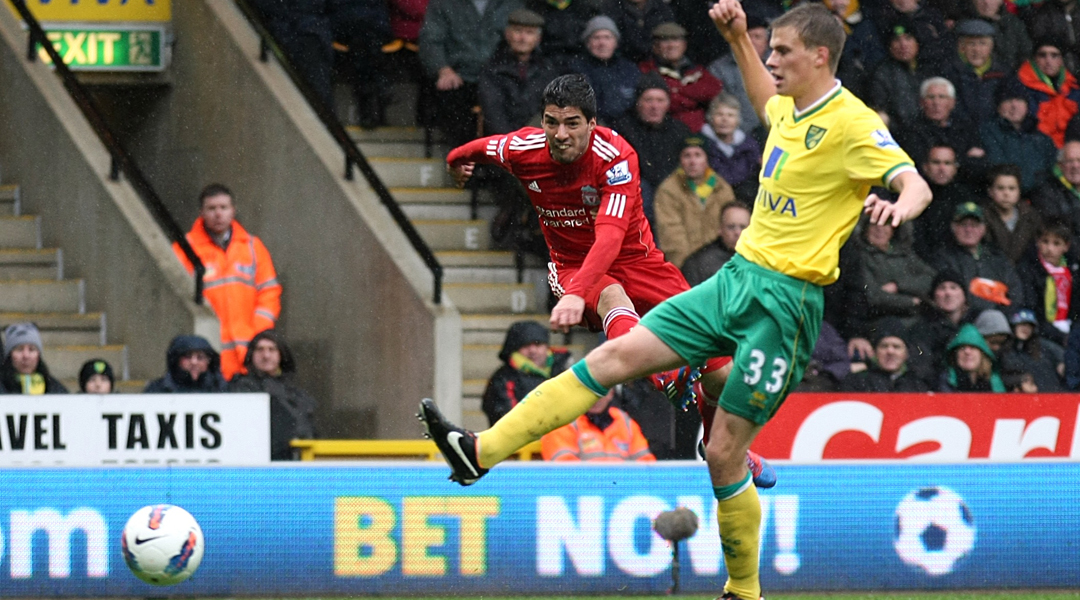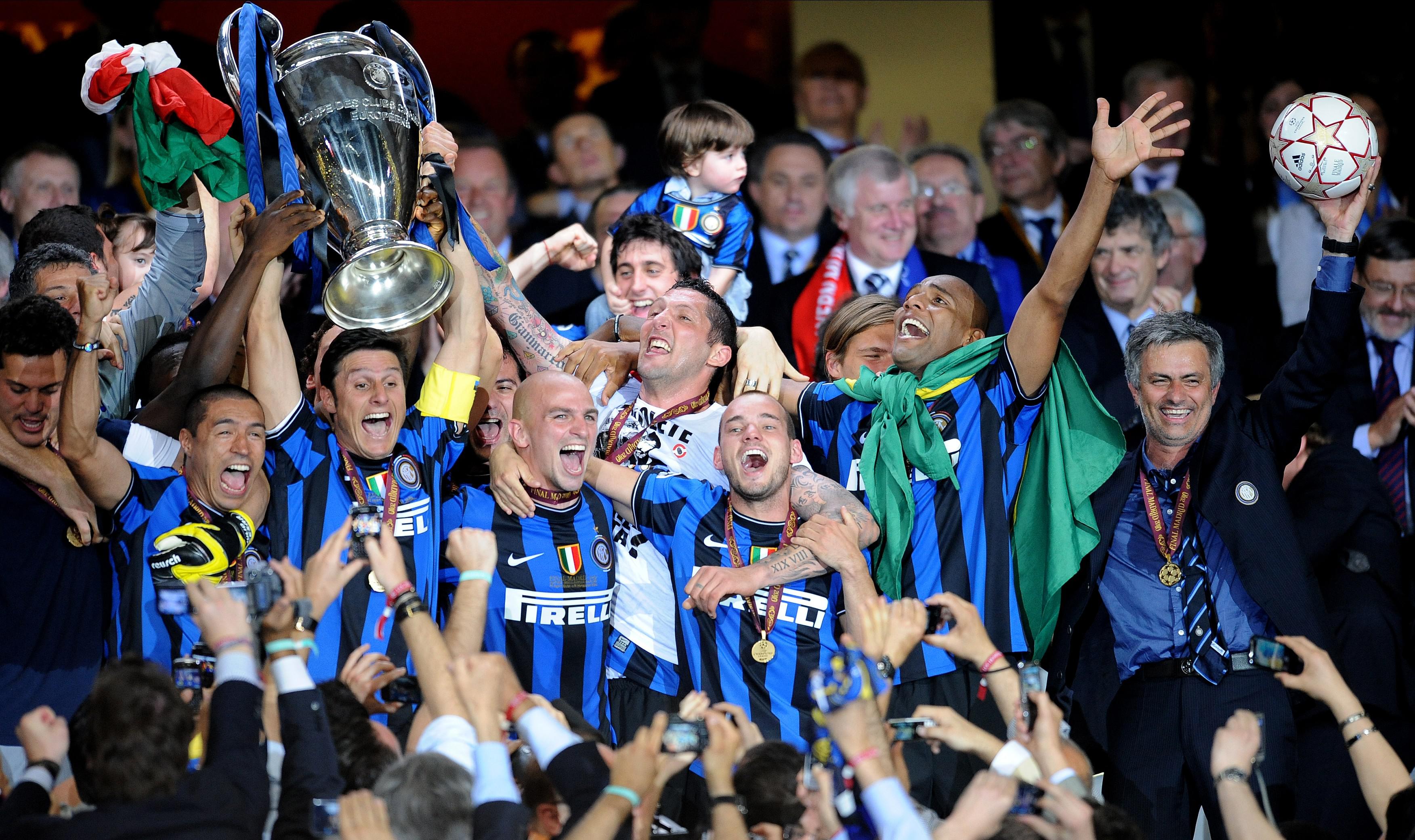What Luis Suarez needs to do to be one of Europe's very best
Michael Cox runs the rule over the Liverpool hit-man.

It’s impossible to evaluate Luis Suarez’s impact in English football without mentioning his disciplinary problems – the Premier League has seen plenty of footballers who make headlines for suspensions more frequently than goals, but Suarez has taken things to a new level.
Peculiarly, Suarez has never been sent off for Liverpool, nor does he regularly commit dangerous fouls. The incidents he’s been suspended for – racially abusing an opponent, swearing at opposition fans, biting an opponent without significant provocation – are almost unprecedented within the Premier League individually, let alone as part of an ongoing series. Suarez, for one reason or another, has serious behavioural problems.
If the controversy rather overshadows his talent as a pure footballer, it also rather obscures the debate about him in another way – when pointing to Suarez’s weaknesses, we instinctively turn to his disciplinary problems, and the consensus becomes that he’s otherwise a flawless player. Yet that isn’t strictly true – discipline remains Suarez’s major weakness, but he can also be selfish in a purely footballing manner, often attempting to take on opponents solo rather than linking with teammates – which, when he’s in the mood, he’s capable of being excellent at.
That Suarez is a brilliant individualist is not up for question. No other player in English football is capable of leading his side so relentlessly and fearlessly, and Suarez’s work rate is one of the key factors in his game. He continually charges across the pitch to make himself available for a pass, he insists on chasing down defenders when the cause seems lost, and he’s as good at working the channels as any player the Premier League has seen.

He’s also extremely proactive without possession, closing down opponents and starting the pressure high up the pitch. It’s absolutely vital that a side which presses has a figurehead like Suarez upfront – he sets the example for the rest of the team, and if the side’s best player is working tirelessly to win possession, the other nine outfield players should be doing exactly the same.
In terms of his attacking play, Suarez has become almost an entirely different player from his first 18 months in the Premier League. During that period, his all-round game was fantastic, but his goalscoring record was rather disappointing, especially considering this was a forward that managed 35 goals in 33 games during his final Eredivisie season with Ajax. The constant chopping and changing of systems under Kenny Dalglish didn’t help – Suarez played in a variety of positions in a variety of formations, and while versatility is an important asset for an attacking player, arguably more than ever in the modern era, the majority of top-class footballers have a defined, permanent position.
Sometimes Suarez was played behind Andy Carroll, and sometimes as the main striker. It seems extraordinary, in hindsight, that Liverpool put such emphasis upon Carroll – and servicing him with delivery suitably for his skillset – when Suarez joined the club in the same month, and is unquestionably the more prolific forward. He scored just 12 goals in his first 41 Liverpool appearances in the league, and always seemed to be overcomplicating things, frequently shooting having dribbled past a couple of opponents, off-balance and disorientated.
Get FourFourTwo Newsletter
The best features, fun and footballing quizzes, straight to your inbox every week.
The game-changer was in April 2012, away at Carrow Road. Suarez scored a quite extraordinary hat-trick comprised of three stunning goals. First, Steven Gerrard won the ball high up the pitch, slipped in Suarez for a fine finish with his left foot, from a tight angle. Four minutes later, Suarez won the ball close to the halfway line by intercepting a stray pass, then charged towards goal before firing into the far corner, again from an angle, but this time with his right. Finally, he completed his hattrick by winning a 50:50 duel on the halfway line, and chipping the goalkeeper from 45 yards. It wasn’t merely his first hat-trick, it was the first time he’d scored more than once in a game for Liverpool. Since then, his goalscoring rate is 34 in 42, and his ratio jumped from 0.29 goals per game, to 0.81 goals per game.

Suarez’s policy in that match was ‘shoot on sight’ – he had two other efforts before completing his hat-trick, and that has remained his approach ever since. In his first 18 months he attempted around four shots per game – that figure is now more like six per game.
He fired the most off-target shots in the Premier League last season (71) and had the second-worst conversion rate from Europe’s major leagues, as just 12.3% of his shots found the net – only Demba Ba was less efficient. Suarez has license to be wasteful, however, because he creates so many chances himself – by robbing opponents, or dribbling past them at speed.
In terms of dribbling, too, he’s remarkably single-minded. Last season he attempted to dribble past an opponent 255 times, according to Opta. There was a staggering fall to second place: Adel Taarabt, on 147. Less than half of Suarez’s dribbles were successful, however.
Certainly, Suarez’s overall impact upon Liverpool’s play is positive – and while he scores more than a goal per game, as he has so far in 2013/14, he’ll remain one of the league’s most feared strikers. But the very, very top-class players make better decisions, and waste possession less frequently. If Suarez overcomes that hurdle, and his disciplinary problems, he’ll be considered among the very best in Europe.
